RUTH WHITE BIOGRAPHY
Ruth White (b. 1925 Pittsburgh) is an American publisher, educator, and an electronic music pioneer, most notably for her early explorations of sound using the Moog synthesizer. According to the back cover of her 1971 release Short Circuits, “Ruth White is considered among today’s most gifted arbiters of what is termed ‘the new music’.” In the late 1960’s Mrs. White recorded a string of releases; “Seven Trumps from the Tarot Card and Pinions” (1968), “Flowers of Evil” (1969), and “Short Circuits” (1970), which featured surprising and new uses of the Moog synthesizer as well as other pieces of electronic musical equipment. She has been a teacher (UCLA Music Department and Elementary School), and has received many honors for her music. Her credits also include classical recordings as well as music for TV commercials, movies, and multimedia.
Ruth White wrote her first composition at the age of 8 and since the age of 15 has released a steady stream of recordings. Ms. White received her education at Pennsylvania’s Carnegie Institute of Technology. While she focused on classical training in piano, she also studied violin, cello, harp, clarinet, and horn. White began formal composition studies with Nikolai Lopatnikoff at the Carnegie Institute of Technology where she received her BFA and MFA in Piano and Music Composition.
In 1951 White’s received recognition for her talent when she won the first prize for composition from the National Society of Arts and Letters. The National Society of Arts and Letters is a not-for-profit organization that encourages and provides financial assistance to talented young artists at the beginning of their careers. She also continued her training with John Vincent at UCLA where she also worked as a Supervisor at the UCLA Demonstration School.
During her time at UCLA she met George Antheil and became, from 1951 to 1954, one of only three students he ever accepted. White credits Antheil with making her fully aware of the principles of classical sonata form, which provided “the key to writing larger works that were logical and structurally sound”.
While at UCLA Ruth White began recording music for Los Angeles County Schools. Her first such recording came in 1954 when Ms. White teamed up with filmmaker Paul Burnford to create a soundtrack and teaching booklet for Burnfords short film “Rhythms of the Freight Yard”. The soundtrack was released as a 10” record titled “Railroad Rhythms” and contained the musical score and sound effects from the film. The booklet was titled “Rhythms Of The Freight Yard Handbook” and in combination with the film was “designed to help teachers in suggesting techniques for teaching rhythms, and with stick-figure drawings it shows floor patterns and movements developed by the children at U.C.L.A. Elementary School. , U.C.L.A.”
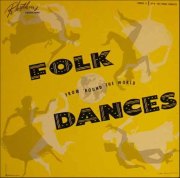 In 1955 Ruth White was contacted by the Los Angeles City Schools District. They needed a reliable source for folk music and other recordings. To meet this demand Ms. White, now in her late twenties, founded the publishing company Rhythms Productions®. Her first foray in Folk music recordings for the district was “Rhythm Instruments; With Folk Music From Many Lands”. In 1957 Ms. White was commissioned by Los Angeles Board of Education to record music for the Physical Education department for all of Los Angeles County Schools. These recordings (5 LP’s over 3 years) were called “Folk Dances from ‘Round the World”. The set also included 5 dictionaries of step and dance positions to guide young students. Rhythm Productions even printed educational materials that showcased the folk dance costumes of countries from around the world. Mrs. White released several more recordings of folk music, but by the mid 1960’s Ms. Whites focused shifted to contemporary dances and electronic music and rhythms.
In 1955 Ruth White was contacted by the Los Angeles City Schools District. They needed a reliable source for folk music and other recordings. To meet this demand Ms. White, now in her late twenties, founded the publishing company Rhythms Productions®. Her first foray in Folk music recordings for the district was “Rhythm Instruments; With Folk Music From Many Lands”. In 1957 Ms. White was commissioned by Los Angeles Board of Education to record music for the Physical Education department for all of Los Angeles County Schools. These recordings (5 LP’s over 3 years) were called “Folk Dances from ‘Round the World”. The set also included 5 dictionaries of step and dance positions to guide young students. Rhythm Productions even printed educational materials that showcased the folk dance costumes of countries from around the world. Mrs. White released several more recordings of folk music, but by the mid 1960’s Ms. Whites focused shifted to contemporary dances and electronic music and rhythms.
In 1964 Ruth White was honored for her creativity in the arts by becoming a Fellow through the Huntington Hartford Foundation (1948-1965). Through this Fellowship and the financial help that it brought, White was able to dedicate more time to her creative endeavors. It was during this time that Ruth became interested more experimental records. According to “The Norton/Grove dictionary of women composers”; “White’s involvement in electronic music was precipitated by a belief that all experiments in traditional media from impressionism to atonality, polytonality and the like, were closed paths – that ‘this’ medium, with its fundamental key relationships, had been exhausted, had reached its zenith by the end of the nineteenth century, and, since then, its basic principles were being systematically destroyed. She also found much early electronic music ‘chaotic and senseless’, eventually concluding that those ‘unshaped and arbitrary sounds being made were noise and just that.”
 Her first studio was totally self-built in 1964. In fact, White’s studio was on display at The Fiske Museum for Musical Instruments in Pomona, California for a number of years. In 2008 these items were moved to The Musical Instrument Museum in Phoenix, a museum scheduled to open in April 2010. With the creation of her own studio White could develop her own brand of electronic music which explored new timbral and harmonic resources without renouncing the order and logic instilled by her classical training. Ruth once wrote about her studio; “… it is my own personal place. No one else works in it. I spend from 10-12 hours in it daily, approximately 9 months out of the year. It is fairly well equipped. several multichannel tape recorders (including 2 new ampex ag 440 machines), a, Moog synthesizer (purchased directly from Robert Moog), oscillators, modulators, electronic organ and electronic clavichord, two pianos, a harpsichord and variable speed and reverberation devices are only a part of the list of machines that i have gathered.”
Her first studio was totally self-built in 1964. In fact, White’s studio was on display at The Fiske Museum for Musical Instruments in Pomona, California for a number of years. In 2008 these items were moved to The Musical Instrument Museum in Phoenix, a museum scheduled to open in April 2010. With the creation of her own studio White could develop her own brand of electronic music which explored new timbral and harmonic resources without renouncing the order and logic instilled by her classical training. Ruth once wrote about her studio; “… it is my own personal place. No one else works in it. I spend from 10-12 hours in it daily, approximately 9 months out of the year. It is fairly well equipped. several multichannel tape recorders (including 2 new ampex ag 440 machines), a, Moog synthesizer (purchased directly from Robert Moog), oscillators, modulators, electronic organ and electronic clavichord, two pianos, a harpsichord and variable speed and reverberation devices are only a part of the list of machines that i have gathered.”
While being an accomplished musician, she had no training on electronic musical instruments. Ruth wrote; “…it occurred to me that I was really hearing pure experiments with noise … or unorganized sound. The break-through of the noise concept was very important. I began to realize the fantastic potential for expanding our musical vocabulary if we could draw upon the new techniques for capturing and making noise. If we could find ways to manipulate these materials, it seemed we could bring them into the musical language in a meaningful way. This could be a breath of fresh air … new life for our musical systems, which had for a long time felt thin and lifeless to me.”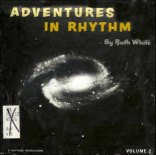
In 1965 Ruth White released “Motifs For Dance Compositions” which featured textures, space motifs, and electronic music as well as influences from eastern cultures. Ms. White continued her experimentation with electronic music the 1966 release “Music For Contemporary Dance Volume 1” and it’s follow up 1967’s “Music For Contemporary Dance Volume 2”. Both releases featured more electronic music combined with classical and ethnic sounds, as well as electronic sounds as accompaniment to poetry. 1967 also saw the release of “Adventures In Rhythms” Volume 1 and 2. While designed for classroom use by using stories and poems to present a variety of rhythmic activities through which children can express their creative ideas in movement, both releases experimented heavily with electronic sounds and noise.
 In 1968 Ms. White was commissioned by choreographer Eugene Loring (for the University of California) to create the music for a performance titled “Seven Trumps from the Tarot Card and Pinions’. The event was a success, and shined a light on Ruth’s talent. In fact the Los Angeles Times reviewed “Seven Trumps” as” …a really exciting, organically musical, electronic score by Ruth White. Not only the soloists but all the participants seemed to draw heat from this score…” and Dance Magazine said “choreographed on contrasting planes, pinions comments on the wings of imagination and love, the shackles of philistinism. And always, Ruth White’s specially written and especially eloquent score heightens the drama of the dance while plumbing its depths …. “. Ruth’s musical recordings, (titled Seven Trumps from the Tarot Card and Pinions) from the show were also released on the increasingly experimental Limelight Records.
In 1968 Ms. White was commissioned by choreographer Eugene Loring (for the University of California) to create the music for a performance titled “Seven Trumps from the Tarot Card and Pinions’. The event was a success, and shined a light on Ruth’s talent. In fact the Los Angeles Times reviewed “Seven Trumps” as” …a really exciting, organically musical, electronic score by Ruth White. Not only the soloists but all the participants seemed to draw heat from this score…” and Dance Magazine said “choreographed on contrasting planes, pinions comments on the wings of imagination and love, the shackles of philistinism. And always, Ruth White’s specially written and especially eloquent score heightens the drama of the dance while plumbing its depths …. “. Ruth’s musical recordings, (titled Seven Trumps from the Tarot Card and Pinions) from the show were also released on the increasingly experimental Limelight Records.
In 1969 Ruth White formed “Lektrafon Music”. “Lektrafon Music” was a commercial house that specialized in using electronic in music television commercials. Her first client was Ford Automotive, with her first set of commercial music designed to introduce the new Ford 1970 line up. Lektrafon Music was active from 1969 to 1971.
During 1969 Ruth White become an active member of the National Trustee for the National Academy of Recording Arts & Sciences (NARAS) when she was elected to the local Los Angeles NARAS chapter with a focus on classical music. This was a natural progression for Ms. White who identified with the educational aspect of NARAS.
 Also in 1969, Mrs. White followed “Seven Trumps…” with the highly experimental release “Flowers of Evil”(1969), a record based on French poet Charles Baudelaire’s volume of poetry called “Les Fleurs du malput”, placing Baudelaire’s words to an electronic music. The poems, already dark and gloomy, were accented eerily by White’s use of “electroaccoustic” music – more specifically the Moog synthesizer. Once again Ruth music was published on Limelight Records.
Also in 1969, Mrs. White followed “Seven Trumps…” with the highly experimental release “Flowers of Evil”(1969), a record based on French poet Charles Baudelaire’s volume of poetry called “Les Fleurs du malput”, placing Baudelaire’s words to an electronic music. The poems, already dark and gloomy, were accented eerily by White’s use of “electroaccoustic” music – more specifically the Moog synthesizer. Once again Ruth music was published on Limelight Records.
These recording were followed by “Short Circuits” (on Angel Records – a subsidiary of EMI), and its French reissue “Klassik o’tilt” (on EMI). Both were released respectively in 1970 and 1971. These release marked a change in direction for Ruth White. For these releases Ms. White was commissioned by EMI to record classics by Shostakovich, Debussy, Chopin, and many others while showcasing electronic instruments of the day (specifically the Moog Synthesizer and various electronic organs).
Perhaps because of these recordings White, along with friend and fellow Moog composer Paul Beaver, were nearly brought in to record with TONTO’S Expanding Head Band. The idea behind this recording was for each person involved to create a track, and then send it to the next synthesist to add to the track. The idea never left the studio. White was never involved… the album in question went on to legendary status in its own right, 1971?s “Zero Time”. Ruth White and Paul Beaver also combined to create “The Electronic Music Association”. “The Electronic Music Association” gave concerts to introduce audiences to new electroacousting works and was active through 1973 . Both White and Beaver also served as Board members on NARAS.
In 1971, Ruth White formed a company called “Ruth White Films” to produce videos for a new technology called Cartridge Television (CTV). CTV was a forerunner to the VHS systems that ended up dominating the market through the late 1970?s through the 1990′s. In all she created 4 video shorts for Motorola Teleprograms Inc “Adventures In Underland”, “Space Trip”, Hickory Dickory Dock”, and “Hush Little Baby”. All 4 were compiled onto on Cartridge titled “Garden Of Delights For Kids No. 1?. Ms White also lent her talents to Motorola’s Electronic Video Recording Machine (EVR) (an unreleased recordable Cartridge for CTV), by showcasing her videos using the EVR for record label executives. Ms. White worked with Motorola from 71-73 to promote CTV. She even produced sound “logos” using synthesizer and Morse Code to spell out “Motorola” that played at the beginning of each of Motorola’s CTV movies (during the “Motorola presents” introduction).
Another of Ruth White’s video projects, a short film titled “Steel” [1971], won for musical score for a “computer generated film” at the Atlanta Film Festival.
This love of music eventually led White back to education. White began collaborating with her nephew David White (a trained classical musician) on educational recordings and teaching materials. In 1973 White and her nephew began producing “multi media” projects aimed at getting children to read. Ms. White realized early on that TV had changed how children learned. The audio without video was dead. In fact, back in 1973 she was quoted as saying “In the future, audio without visual, except for dance records, will be worthless”. It was in 1973 she invented the character Mr. Windbag, a character featured in her 1973 educational series “The Adventure of Mr. Windbag”. The “Mr. Windbag” series was two multi media packages. One was titled “The Mr. Wind Bag Stories” and the other “The Adventures Of Mr. Windbag In Metric Land”. These two packages each featured 3 reel-to-reel films and three separate story cassette, as well as activity books and teacher guides.
Also in 1973, Ruth White became the Vice President of NASAR Institute. The NARAS Institute was a nonprofit organization created and partially financed by NARAS, and helped to implement music and recording courses at schools of higher learning and has encouraged and supported grass roots programs aimed at familiarizing all interested persons with the creative and commercial aspects of the recording industry. This was often done through symposiums hosted by Ms. White and the NARAS Institute.
Through the rest of the 1970’s Ruth and David White released a steady stream of educational releases covering topics such as reading, mathematics, self esteem, and staying active, just to name a few. Workbooks on grammar, punctuation, mathematical, measurements, holidays, and many other topics were also produced through the 1970’s. White worked with many other collaborators throughout the 1970’s. Frequent collaborators included Terry Gris, Marilyn Rehwald, Theresa Straley, Sally Blackburn, and Jean Paynter, as well as Cary Meshul, Michael Lembeck, Coral Kerr, Jim Mandell, and Gary Maynard.
 In 1982 Ruth White’s service to education and instructional music earned her an American Library Association ‘Notable Recording award for her recording “Singing Games”. That was followed in 1983 with a Parent’s Choice award. Ruth White recorded her last group of childrens music in the mid 1980’s, but continued to produce educational material through her publishing company (Rhythm Productions) through the 1990′s out of her Los Angeles office. In fact up through the late 1980′s her own personal studio was located upstairs from her publishing company.
In 1982 Ruth White’s service to education and instructional music earned her an American Library Association ‘Notable Recording award for her recording “Singing Games”. That was followed in 1983 with a Parent’s Choice award. Ruth White recorded her last group of childrens music in the mid 1980’s, but continued to produce educational material through her publishing company (Rhythm Productions) through the 1990′s out of her Los Angeles office. In fact up through the late 1980′s her own personal studio was located upstairs from her publishing company.
Since Its beginning Rhythms Productions was a pioneer in its field, leading the way with innovative products and learning through music programs. Its publications include Tom Thumb® award-winning recordings, multimedia kits, books, and films. Rhythms Productions has released recordings over the years as; Tom Thumb Records & Tapes, Tom Thumb Records, Tom Thumb Music, Tom Thumb, Rhythms Productions Records, Rhythms Productions, Cheviot Corporation, and Cheviot Corp.
Apparently in the early 2000′s White was experimenting with an opera composition which was to be a “musical theatre trilogy, for which she is writing both text and score; using acoustic and electronic music, as well as a variety of special effects, this work represents a convergence of different paths in her career, a reopening of past doors through which new vistas can now been seen.”


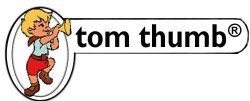



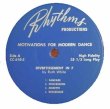
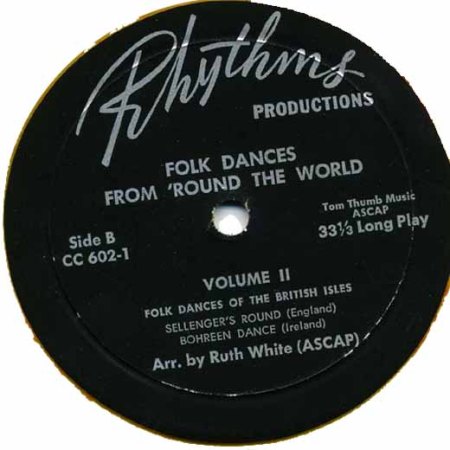

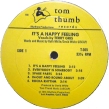
At last, an in depth article on Ruth White…very well written and with the just the right amount of factoids (the TONTO story is pretty interesting and of course in a parallel universe a copy of myself is at this moment praising the album to the vermillion skies no doubt) to keep even the neurons firing of even the most data-saturated of bloggers….and of course the discography! I had no idea she was this prolific.
The two albums I have really grokked by Ruth White are Seven Trumps From The Tarot Card & Pinions and Flowers of Evil and it adds a whole new level of almost dissonance to filter the music she makes through the fact the albums were made in 1968 and 1969.
Once you have fallen in love with the sonic alchemy of the late most sublime Delia Derbyshire, the next stop is Daphne Orme followed by Ruth White and interestingly, all three women were as much about ‘tek’ and birthing sound machines as they were about composition…my best guess is the circuitry and nested loops and connectivity of analog machines has a deep resonance with ‘female’ consciousness, but what do I know….
Any reason there are no links to the rips of her OOP albums floating around the blog-o-sphere or are you hoping the readers will take care of that in the comments section?
Hi Saucer People….
Sorry for the late reply… I only just now noticed the question at the end. I have only heard bits and pieces of the later stuff. If people wanted to post it that would be great.
I found out about Ruth White last year when I played this weird game called Space Funeral. I ended up doing research on her songs because I wanted to know what she was saying in “Spleen” and now I know she was reciting translations of Baudelaire’s poems in Flowers of Evil. The Space Funeral soundtrack included songs by Ruth White, Delia Derbyshire, Les Rallizes Dénudés, and BBC Radiophonic Workshop.
i need to contact ruth white. she becoming a huge influence on my music, and i would like to hear/see some of these things there is so little access to.
I have no contact with Mrs. White.
amazing! had no idea, i accidentally found out about Ruth White! Definitely I will tell my college students about her!
Nice! I have most of my information footnoted if you need it.
If you are still looking for “A How-To With Tape,” please contact me at the e-mail address supplied and I will send you a .pdf.
Thanks Will. I sent you an Email.
Do you know where I can find her music? I’ve been searching everywhere and can’t find a thing.
Check ebay. That’s your best bet.
Do you happen to know of the source of ruth-white-moog.jpg (the first picture)? I’m curious, since I assume it was taken before 1970, and if it was published without a copyright notice, it could be used on her Wikipedia article.
It’s from 1968 I believe. It was included in Billboard Magazines Nov 2 article titled “Instruments Hold The Key For Electronic Music” I also saw it for sale on Ebay as a postcard advertisements for Ruth White’s Limelight releases.
Brad, we are disbanding our record collection. Please contact me. Adam
http://tomthumbkids.com
it’s only a draft, but it’s a start if you need to be in touch with current educational product catalog of ruth white.
I will set a link up to this site.
Great site! I never knew of her til today 🙂